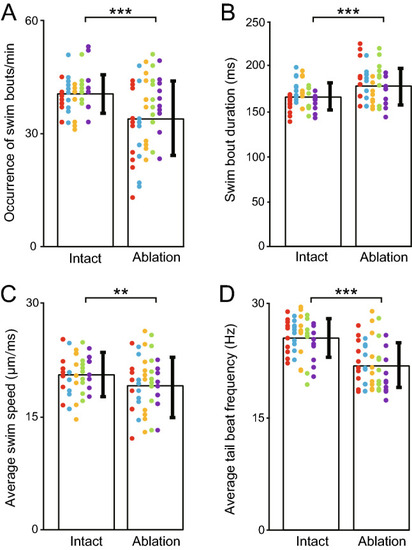- Title
-
Long descending commissural V0v neurons ensure coordinated swimming movements along the body axis in larval zebrafish
- Authors
- Kawano, K., Kato, K., Sugioka, T., Kimura, Y., Tanimoto, M., Higashijima, S.I.
- Source
- Full text @ Sci. Rep.
|
Swim form of a zebrafish larva and projection of an MCoD neuron. ( |
|
Firing pattern of MCoD neurons during spontaneously occurring fictive slow swimming. ( |
|
Ablation of MCoD neurons lead to the increase of head-yaw displacement during spontaneous swimming. ( |
|
Swim parameters of intact and MCoD-ablated fish. For the analyses of each parameter, five fish were examined for each fish type. For each fish, 10 swim bouts (or a 1-min movie in the case of |
|
S-shape swim forms are impaired in MCoD-ablated fish. ( |
|
Anti-phasic relationship of the rostral and caudal motor activities is impaired in MCoD-ablated fish. ( |






